NYC’s Forgotten ‘War on Christmas Trees’
Discover how an obscure holiday crackdown affects festive street vendors today!



From mass burial grounds to abandoned psychiatric hospitals to haunted townhouses, this is an “architectural” version of a most haunted list.
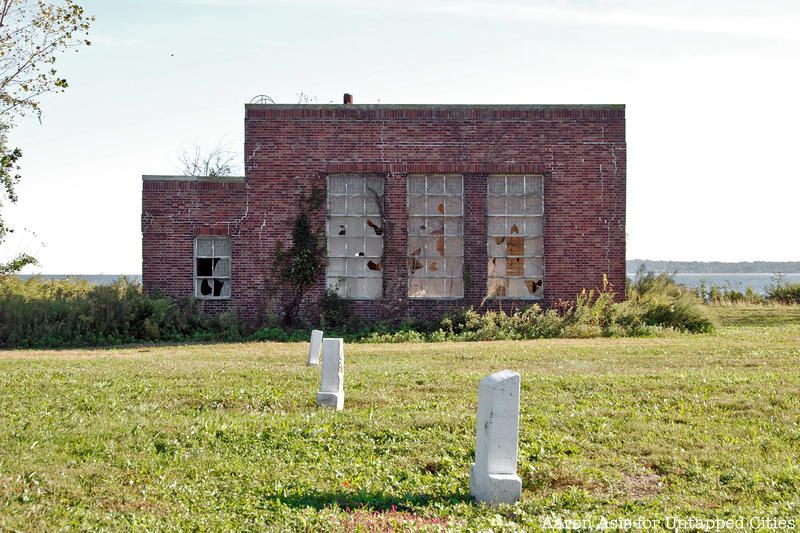
Located near the Bronx, Hart Island is a 101-acre island burial ground, the city’s last potter’s field, for those who are either unclaimed or whose families couldn’t afford a funeral. The island is uninhabited today, but more than 800,000 dead has been buried there since 1869, making it the largest tax-funded cemetery in the world. There are also some “notable” people buried at Hart Island, discovered after death. Bobby Driscoll, the Disney child actor is buried there. He was the voice of Peter Pan in the animated film and stared in Disney’s Song of the South. He died unknown, thought to be homeless, so was taken here. The grave of the first child to die of AIDS is also on Hart Island.
The island is also home to a crumbling women’s lunatic asylum and had areas used for drug rehabilitation. Read our interview with someone who lived there for two years in the 70.s
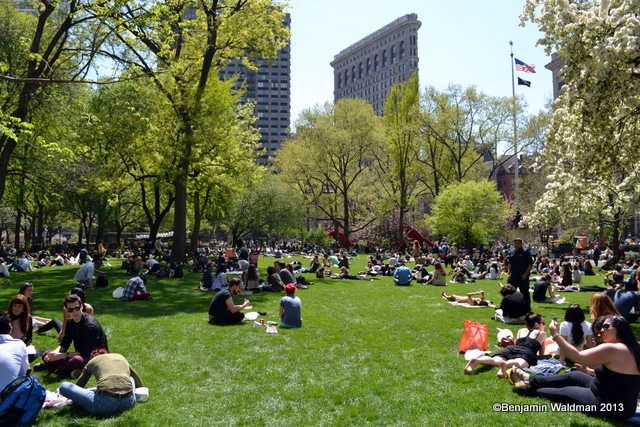
Surprise! A large number of the famous parks you’ve been to in New York City were once graveyards and potter’s fields. This includes Bryant Park, Washington Square Park, Madison Square Park, Union Square, City Hall Park and more. Another potter’s field is the land under the Waldorf-Astoria Hotel, which of course has the abandoned, secret train platform even further below.
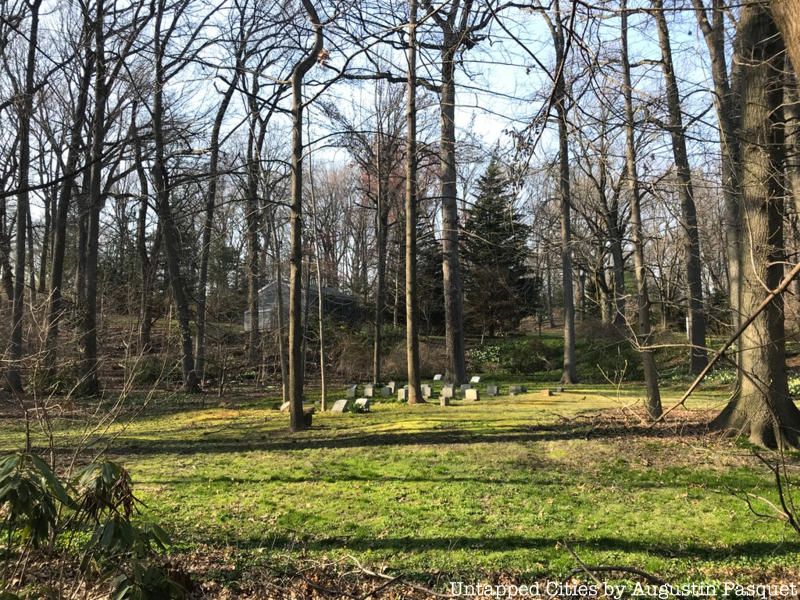
In Prospect Park, off of Center Drive, there are 2000 gravestones and buried bodies older than the park itself. This property, the only private one in the park, is a cemetery owned by the Religious Society of Friends, aka the Quakers. Burials on the land date as far back as the 1820s and is still an active cemetery site. Buried here is Montgomery Clift, the star of “From Here to Eternity.”
The cemetery is surrounded by high fences topped by barbed wire to keep the Montgomery Clift-obsessed public out, as well as those who, according to rumors, used to practice devil worship or Santeria within the cemetery. (If these practices ever took place, they’ve moved slightly outside the cemetery, if the decapitated goat and dismembered chickens found in Prospect Park in recent years indicate anything).

As previously mentioned, Washington Square Park was once a potter’s field, and is home to approximately 20,000 bodies. It was also a forum for public hangings, and it’s said that the tree in which prisoners were hung, known as the “Hangman’s Elm” still exists in the northwest corner of the park. Although some historians dispute if this was the site of hangings, local lore states that the last hanging here occurred in 1820 when Rose Butler, a slave, was executed for burning down her master’s home. During the Revolutionary War, it was said that traitors were hung from the tree. In 1824, the Marquis de Lafayette even claimed to witness the hanging of twenty highwaymen there. Whatever tales hold true, the dark aura of the Hangman’s Elm’s past nevertheless has aptly led to its rather gruesome naming.

Just 350 yards east of the Bronx, an uninhabited island known as North Brother Island lies in the East River, sealed off from the world. Before it became off-limits to the public in 1963, the city-owned island served many purposes since the 1880s. Some are more unsettling, such as quarantining victims of diseases and treating drug-addicts, and some more practical, like housing returning second world-war veterans.
It was here in 1907 that the notorious Typhoid Mary was confined. Mary didn’t exhibit symptoms and refused to admit she was a carrier, leading to her exile after outbreaks in the places she worked. After two decades of quarantine, she died on the island in 1938, followed by the hospital’s closure shortly after in 1942.
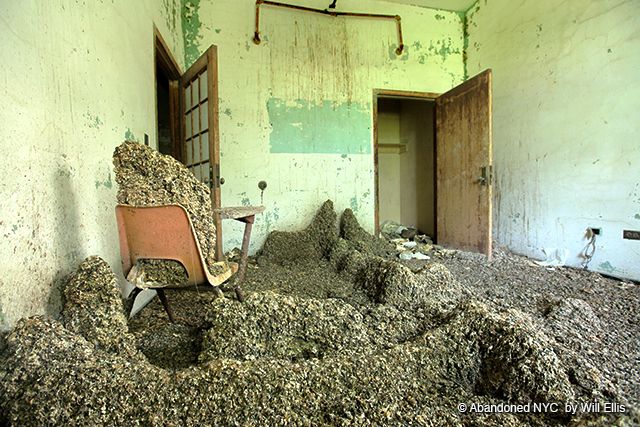
Photo by Will Ellis.
The sprawling Creedmoor Pyschiatric Center was constructed in 1912 in Queens Village as the Farm Colony of Brooklyn State Hospital, one of hundreds of similar psychiatric wards erected at the turn of the century to house and rehabilitate those who were ill equipped to function on their own. By 1960, Creedmoor’s population swelled from 150 in 1918 to over 7,000. As late as 1984, the violent ward of Creedmoor Psychiatric Center was rocked with scandal following the death of a patient, who was struck in the throat with a blackjack by a staff member. (The man was restrained in a straitjacket at the time.)
The campus continues to operate today, housing only a few hundred patients and providing outpatient services. Many of the buildings at Creedmor have been sold off. Others, like Building 25, lie fallow. Building 25 is notoriously filled with piled of pigeon poop while building 70 has the remnants of a former NYPD narcotics office filled with fake blood.

Located down one of the most picturesque blocks in New York City stands a building with a notoriously dark history. Nicknamed the “House of Death,” 14 West 10th Street is supposedly haunted by 22 ghosts, the most famous of which is Mark Twain, who resided there from 1900-1901. The brownstone was also home to a real life demon—Joel Steinberg. A former New York criminal defense attorney, Steinberg was charged with first-degree manslaughter for beating his 6-year old, illegally adopted “daughter” to death.
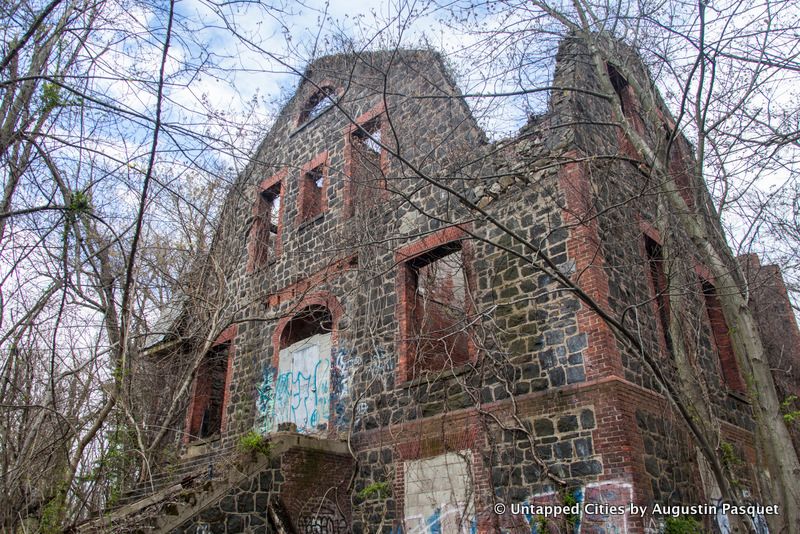 Greenbelt’s unruly forest surrounds Farm Colony structures.
Greenbelt’s unruly forest surrounds Farm Colony structures.
Throughout its history, the Staten Island Farm Colony was often associated with society’s unwanted. The colonial farm era in the 19th century witnessed a bout of construction developments catered to housing the poor, infirm, mentally ill and developmentally disabled. On a rather disturbing note, a 1920s abduction and murder of a seven-year-old boy toccurred on the Farm Colony’s grounds. The Farm Colony community claimed they saw an old man and young boy walking in the woods on the day the child went missing, and fingers pointed to legendary serial killer Cropsey as the one to blame.
In another story, Andre Rand, a man who allegedly lived in the tunnels underneath the abandoned site, was responsible for a string of child murders during the 70’s and 80’s. In 1987 the body of Jennifer Shwweiger was found not far from where he set up camp.
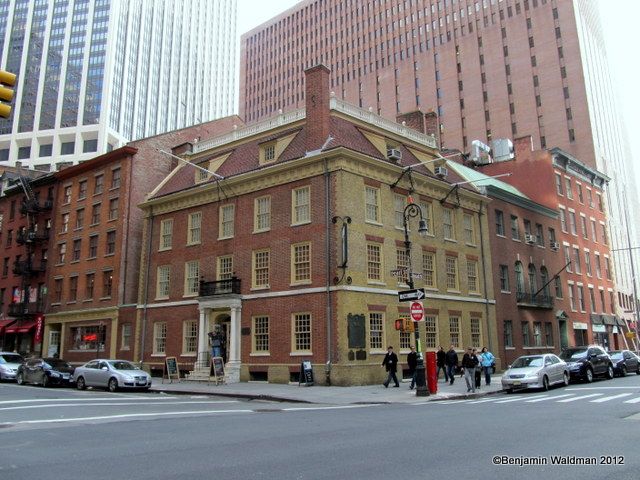
This Revolutionary-era tavern, still in service today, was the site of George Washington’s farewell address to his army officers at the end of the war. Other people have bid farewell there as well–though not voluntarily. The tavern was the site of a murder/suicide in the 1790′s, when a man stabbed his cheating wife and then himself. In 1975, Puerto Rican nationalists bombed the building, killing four. Workers and patrons have reported hearing footsteps and unexplained noises. Today, the first floor of Fraunces Tavern remains a tavern and restaurant, and the second floor is a museum full of Revolutionary War relics including George Washington’s tooth!

A former sugar refinery was located at 1 Police Plaza during the Revolution and it is commonly said to have housed a British prison, although one historian believes it to be an urban myth. It’s rumored to be haunted by the prisoners who starved here during the war. Nonetheless, other notorious sugar house prisons were located nearby housing prisoners in terrible conditions. The refinery here was demolished in 1892, and today is the NYPD headquarters. One window of the original refinery remains, and is integrated in the current building.
This article has been collectively written by Catherine Ku, Will Ellis, Benjamin Waldman, Lauren Lorey, Will Ellis, Joyce Lam and Vivek Shah.
Subscribe to our newsletter